Despite being categorized as plain and boring, vanilla is one of the world’s most complex flavors. Vanilla has over 250 flavor and aroma compounds depending on the type of bean you’re using. Choosing the right bean might seem like a no-brainer for the experienced chef, baker, or confectioner. However, knowing what vanilla bean is best can be challenging and overwhelming for those just beginning their baking journey. This guide will help you understand how to use a vanilla bean in recipes and help you decide what vanilla beans are best for you.
How do you use vanilla beans?
If you’ve ever baked something from scratch, it is likely that the recipe called for vanilla extract. However, some people desire real vanilla bean texture, taste, and visual appeal in their recipes. Have you ever had a treat that had tiny black specks in it? Those are vanilla seeds from the inside of a vanilla bean pod.
Getting those seeds out of a vanilla bean is pretty simple. First, you will grab a cutting board and a sharp paring knife. Now, lay your Grade A bean flat and insert the knife up the length of the bean, splitting it on one side. Finally, open the bean and use the backside of the blade to scrape the seeds from the pod. These vanilla seeds are what you will add to your recipe. Some recipes will have you scrape the seeds and just use those, and others will call for the entire vanilla bean (including the outer pod). If you would like to see a demonstration of how to cut and scrape a vanilla bean, you can check out our Youtube channel or Instagram.
The process of using vanilla beans is pretty simple. However, since there are multiple varieties of vanilla, it is crucial to know the different types before deciding what vanilla beans are best for you.
What does ‘Grade A’ or ‘Gourmet’ Mean?
Grade A or Gourmet Grade vanilla beans have a specific moisture content, length, and condition. Moisture content tends to be the most important when grading vanilla beans.
A high-quality bean will be very moist and have a visible oil that leaves a residue on your fingers after touching them. These beans will also be very flexible. The length is also essential when grading vanilla beans. Grade A beans are typically 6″ or more, which is the case with all Singing Dog Vanilla beans. Shorter vanilla beans generally are set aside and used to make vanilla extract.
Regardless of the type of vanilla bean, the process for using them is the same. But if you are looking for a specific taste or flavor, it is essential to understand the difference between vanilla beans.
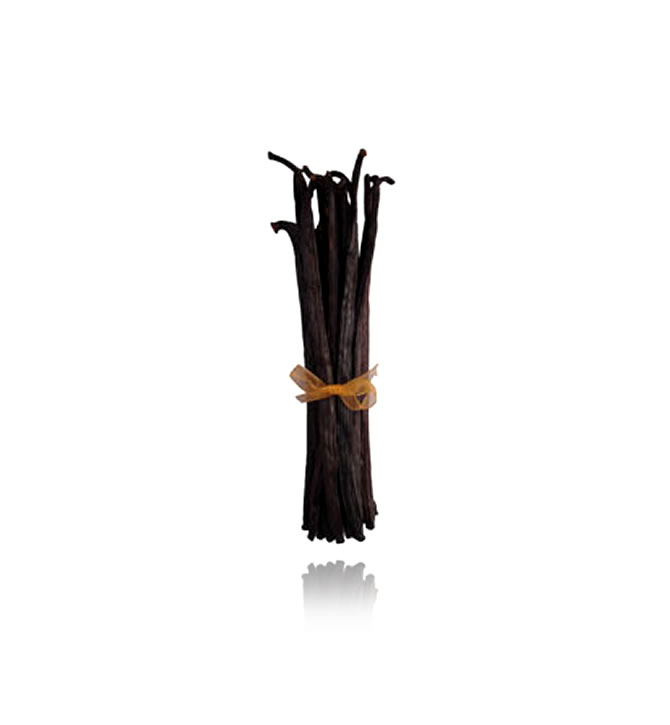
What makes vanilla beans different?
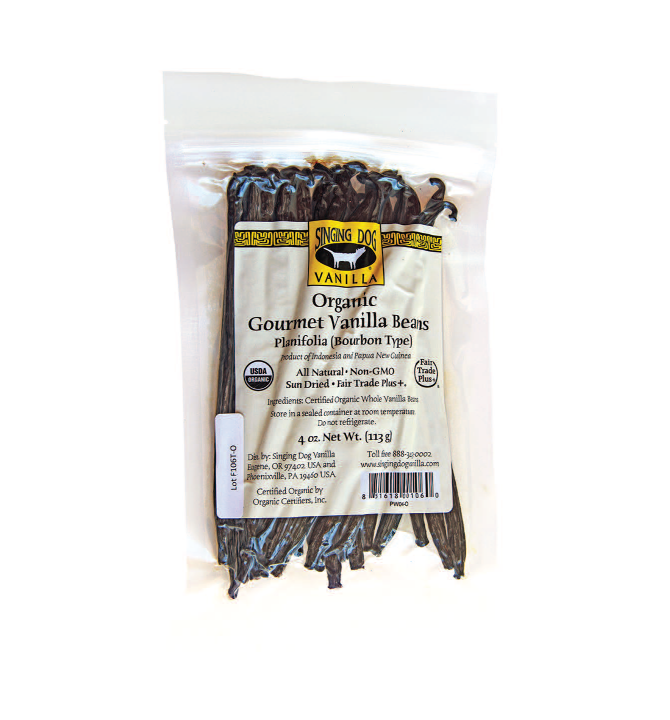
Two main characteristics make vanilla beans have a different flavor and aroma. The first is the origin of the bean. Much like the grapes used in wine, the environment where the vanilla beans are grown will affect the bean’s flavor profile.
The next characteristic is species. Planifolia and Tahitian are the main species of vanilla that are grown for commercial use. Each species is incredibly unique. However, the most commonly used vanilla beans are Planifolia. These beans are grown worldwide from Hawaii to Mexico to Madagascar.
At Singing Dog Vanilla, we have Planifolia and Tahitian beans. You can purchase these beans in bulk or smaller quantities, perfect for at-home use. Knowing what vanilla beans are best depends on your recipe and the flavor profile you are looking to achieve.
Planifolia (Bourbon Type)
The planifolia variety of vanilla originated in Mexico and is often called “Bourbon Vanilla.” Many people think the name comes from bourbon whiskey. However, this is a common misconception, and vanilla has no relation to the alcohol of the same name. In the 1800s, commercial cultivation of planifolia vanilla began on the island of Reunion, just east of Madagascar. The French Bourbons controlled the island, and the name stuck even after being introduced to other regions. Today, most of the world’s vanilla supply comes from Madagascar and Indonesia.
Bourbon type vanilla will give you the traditional smooth and vanilla flavor that we associate with vanilla ice cream. When you cut open a vanilla bean, you will see a plethora of vanilla caviar and a familiar rich vanilla aroma. Bourbon vanilla is typically more potent and gives any recipe a deep, earthy vanilla flavor. They are also known as having hints of rum, raisins, and brown sugar. In general, bourbon-type vanilla beans will be slightly longer and skinnier than other species of vanilla beans.
Planifolia vanilla is the most common, so if you’ve ever had a vanilla cake or something similar bourbon-type beans were probably used in the recipe.
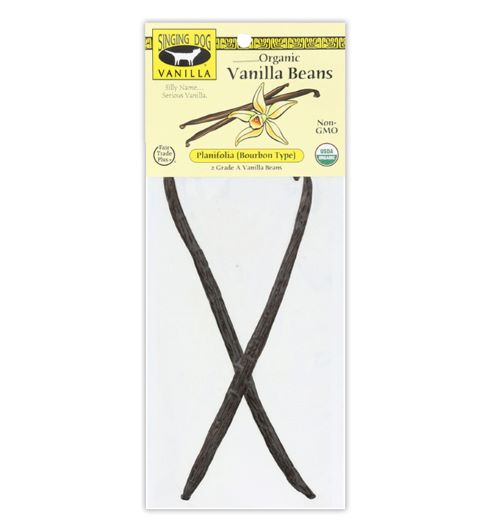
Tahitensis Vanilla (PNG-Tahitian)
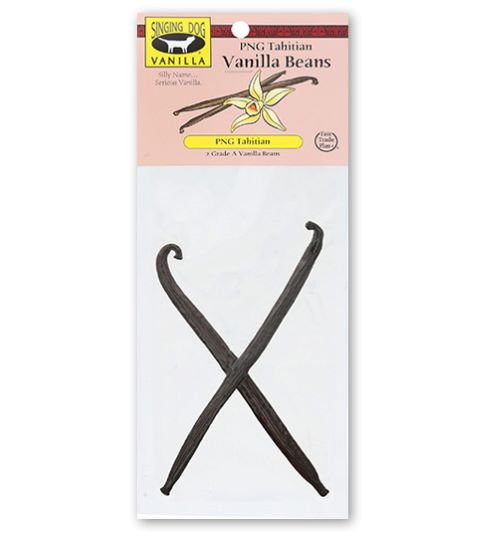
Tahitian Vanilla is very similar to bourbon type vanilla. This species of vanilla was brought to Tahiti by the French in 1848 and has been grown there ever since. Over time, this range has expanded to other islands throughout the Pacific, including Papua New Guinea (PNG), where we get our Tahitensis beans.
PNG Tahitian vanilla provides more of a sweet, fruity flavor. Many chefs like to use these beans in pastries and cold desserts. When cut open, these beans will be bursting with vanilla seeds and have notes of red wine, peach, and cherry. These beans tend to be slightly shorter, but wider when compared to other species, like planifolia.
Tahitian vanilla beans have a variety of different uses and not just desserts. Some people will use Tahitian vanilla to make perfumes and fragrances because of its fruity and floral aroma.
So, which vanilla bean is best for you? Let us know. If you have any questions, feel free to call us at 888-343-0002 or email info@singingdogvanilla.com.
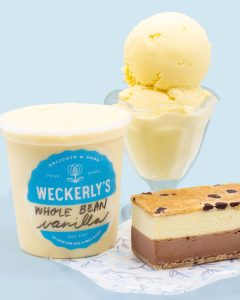
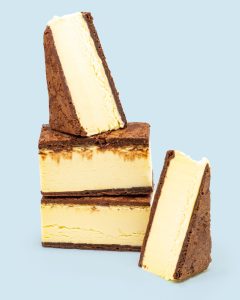
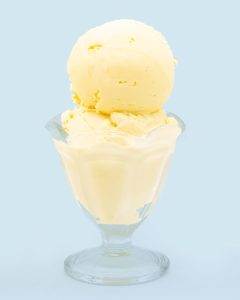
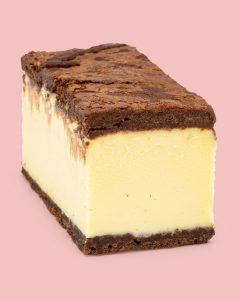
(Special thanks to Weckerly’s Ice Cream and their photographer Meg Kelly for providing photos of their ‘Full Vanilla Bean Ice Cream & Tahitian Thaini Brownie Sandwhich)

